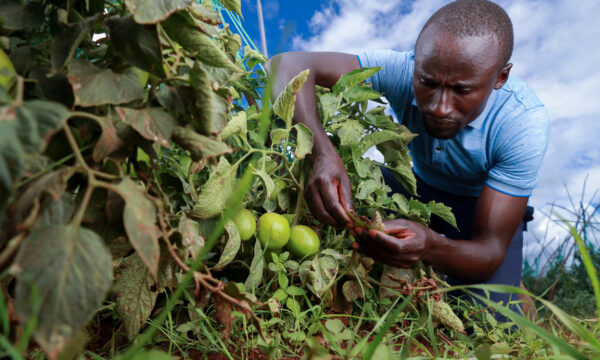Many of us have seen the adverts trying to convince us that there are ‘good bacteria’ that we should be making the most of in yogurty, pro-biotic drinks to help keep our guts healthy. Now it turns out that plants like maize are already one step ahead of us – not only making the most of beneficial soil (or rhizo-) bacteria, but having also learnt to draw the good bacteria towards their root system. Once they’ve done that, the plants just sit back, relax, and let the hardworking bacteria do all the work for them.
It has recently been shown that maize crops emit a chemical scent that can attract beneficial microbes to their roots. These chemical scents or metabolites, known as benzoxazinoids (BXs), help the plant stay healthy by attracting in beneficial rhizobacteria such as Pseudomonas putida. P. putida helps the plant grow well and defend itself from attacks by pests and diseases by competing for the rhizosphere (the area of soil surrounding the roots) and as a result often out-competing harmful soil bacteria. Their presence also makes the area around their roots much higher in nutrients like iron and phosphate – essential for healthy plant growth. The role of these soil bacteria is thought to be especially beneficial for seedlings – a time when plants are often at their most vulnerable stage of development.
Although the presence of plant pheromones is not news in itself, these particular chemical scents were previously thought to have been toxic. However, after being attracted in, P. putida then break down the BXs, maybe even using them as an energy source, and detoxify the environment around the roots.
This research has been new enough in itself, but it has also provided a number of ideas for future research. It is thought that the BXs produced by the plants not only attract in the soil bacteria, but results also indicated that the chemicals activate certain genes within the bacteria, too. These activated processes are the ones that help defend the plants against more harmful bacteria – certainly leaving plenty more to look out for in future studies!
This information could go a long way towards the future protection of our crops from pests and diseases. Understanding the natural processes and complex relationships between organisms is thought to be key to finding sustainable and robust methods of crop protection and food security.
Sources including the original, open-access journal article:
Neal, A. L., Ahmad, S., Gordon-Weeks, R., Ton, J. (2012) Benzoxazinoids in Root Exudates of Maize Attract Pseudomonas putida to the Rhizosphere, PLoS ONE Vol. 7(4):e35498. doi:10.1371/journal.pone.0035498
Davies, M., Plant perfumes woo beneficial bugs, EurekAlert!, 24 April 2012
Allison, R., Research sparks new approach to cereal disease, FWi – Arable News, 24 April 2012
Related News & Blogs
The role of soil health in sustainable agriculture
Previously, we have discussed the importance of soil health for agriculture, highlighting its threats and outlining protection strategies. In this blog, we dig deeper into the role of soil health in sustainable agriculture and explore its long-term ben…
18 June 2025





